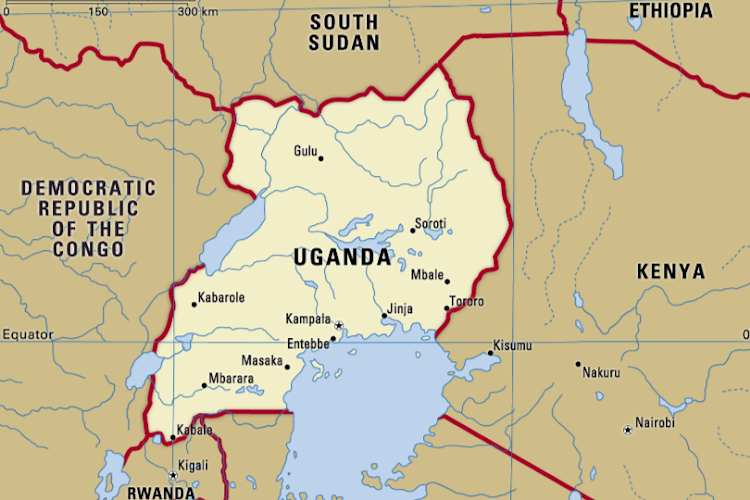| |||||||||
|
|||||||||
|
By:
Emmanuel Wanjala | |||||||||
| Posted:
May,29-2023 10:56:12
| |||||||||
| Northwestern Kenya and the entire Rift Valley Province up to 30 km from Nairobi would today be in Uganda had Queen Victoria woken up in a foul mood unfavourable to Kenya over a century ago. Lucky for us, she had before her death on January 22, 1901 - with the advice of Her Majesty's Privy Council- issued an Order in Council to transfer Kisumu and Nakuru to the East African Protectorate, modern Kenya. But it wasn’t until August 11, 1902, that the order was officially signed just two days after the coronation of the late queen’s son, King Edward VII, which had been delayed after he suffered from appendicitis in June that year. "And whereas His Majesty has been pleased to direct that the territories hitherto known as the eastern province of the Uganda protectorate shall form part of the East African Protectorate, I do hereby order that from April 1, 1902, inclusive, the said territories shall be deemed to be within the territories of East Africa Order-in-Council 1897 and shall be known as the Kisumu and Naivasha provinces." The 1902 Order in Council was signed at the Court of Buckingham Palace in England, becoming the first Constitution that was used to govern Uganda by the British. Uganda became a British protectorate in 1884 during the scramble for Africa and was later divided into six provinces. The Eastern Province, part of which was annexed and transferred to Kenya, covered Nandi, Kavirondo, Eldoret, Naivasha and Maasai, up to the border with Tanzania. During the colonial period, the Luhya and Luo tribes of Kenya were collectively referred to as The Kavirondo, occupying the present Western and Nyanza regions respectively. Maasai is the present Kajiado County. Turkana and Karasuk were also in Uganda’s Rodolf province. Karasuk is legally part of Kenya, but following an agreement made in 1931 between Kenya and Uganda, it is now administered as part of the Karamoja District of Uganda under the District commissioner at Moroto. Most Kenyans are alive to the feud that has been lingering between Kenya and Uganda in recent years regarding the jurisdiction of Migingo Island, but before this, a graver diplomatic row in 1976 threatened to bring the two neighbours to military combat. Five years after deposing President Milton Obote and seizing power in a coup on January 25, 1971, Idi Amin Dada attempted to redefine Uganda's border with Kenya. His argument? The former army General reasoned that the colonial regime made several mistakes when making territorial demarcations. Amin said the land the British transferred to Kenya was one of the most fertile areas in East Africa and that God was not a fool to have allocated it to Uganda. As part of 'Field Marshal Amin's Operation to Correct Mistakes Made by the Britons,' Amin said he was keen on liberating all of Uganda’s territory in his capacity as the supreme commander of the Uganda Armed Forces. As part of this liberation, he had in 1972 declared the Economic War and expelled commercially dominant Indians from Uganda. Voice of Uganda, the government's official newspaper, reported on February 21, 1976, that when declaring the Economic War, Amin promised to correct all the mistakes made by the British and the transfer of fertile soils to Kenya was sufficient to provoke him to go to war to reclaim it. In February that year, he directed that every Ugandan should buy a pamphlet detailing the boundaries of the country claiming that Uganda’s borders went beyond Juba and Torit in Sudan and the entire western Kenya. The dictator who died in exile on August 16, 2003, in Libya, developed cold feet only when Kenya’s founding father Mzee Jomo Kenyatta threatened to block Uganda’s imports through the port of Mombasa. In his book titled The Shaping of Modern Uganda And Administrative Divisions published in 1976, Amin revealed why he backed down. He said he had no intentions for war nor advocating for any border changes with Kenya but was only educating the public in what he termed a "noble objective". "In order to make Ugandans understand the noble objectives, I consider it necessary to explain to them their past recorded geographical and historical connections as before the partition of Africa by imperial powers at the Berlin Conference of 1884. "There was no intention of Uganda claiming an inch of any territory of her neighbours, whether Kenya, Sudan, or Zaire (Congo). "As a firm believer in OAU (now AU) and as its Chairman, I know of the OAU July Resolution of 1964 which solemnly declares that 'all member states pledge themselves to respect the borders existing on their achievement of national independence'," Amin wrote in his book. He nonetheless insisted that the British knew he was telling the truth and would always speak the truth as he feared nobody except God. In recognition of Uganda's geographical location as a land-locked country, Amin said whereas he had ruled out war with his neighbours, he wouldn’t hesitate to take military action against any country that would dare interfere with the transportation of imports and exports to and from the sea to Uganda. | |||||||||
|
Source:
The Star
| |||||||||
|
||||||||||||||||||||||||||||||||||||||||||||||||||||||||||||||||||||||||||||||||||||||||||||||||||||||||||||||
|
||||||||||||||||||||||||||||||||||||||||||||||||||||||||||||||||||||||||||||||||||||||||||||||||||||||||||||||


.jpg)




